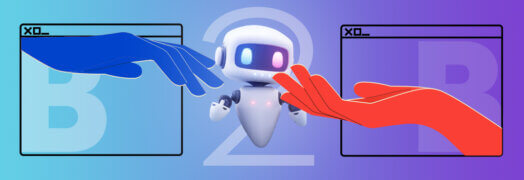These days, most people use the terms “Internet” and “the Web” interchangeably. However, although the two are inextricably linked to each other, they are not one and the same.
The Internet came first. Now a massive global connection of computer networks, the Internet started from humble beginnings in the late 1960’s when scientists began using “packet switching” technology to create small networks of computers that used a variety of protocols.
This led to the development of new protocols for “internetworking,” which enabled the joining of multiple networks into one larger, integrated network. However, these networks were largely restricted to the scientific and research communities. Networking technologies continued to evolve over the next few decades, and in 1995 the Internet finally became available for unrestricted commercial use.
The Internet we know today consists of a global system of interconnected public, private, academic, business and government networks. Using different protocols such as TCP/IP, FTP, SMTP, and HTTP, it carries vast amounts of information to billions of users around the world every day. It is these protocols than enable email, instant messaging, file sharing, websites, and all the tools that have become so much a part of our daily lives.
Developed in 1990 using concepts from earlier hypertext systems, the World Wide Web – a.k.a. WWW, W3, or simply “the Web” – is an information-sharing platform built on top of the Internet. Think of it like an ice cream cone. The Internet is the cone; the Web is the scoop of ice cream on top. The Internet doesn’t need the Web to exist. But without the Internet, the Web would have no place to sit.
The Web, which currently has nearly 2.5 billion users, makes it possible to access and share information using hypertext transfer protocol, commonly referred to as HTTP. HTML, or hypertext markup language, translates the HTTP information into a graphical interface that people can easily read, see and understand. Every website you visit and every page on those sites exists on the Web, not the Internet. However, without the Internet providing the foundation for the Web, you would not be able to view those pages.
The development of the Internet represented a real boon for scientists, academics and government agencies. But it was the Web that truly shook the commercial world. Not since the invention of the printing press has a new technological so totally revolutionized the availability and distribution of information. With a few clicks of a computer mouse, people anywhere in the world, at any time, have access to the vast majority of information that currently exists on the planet.
Equally important, anyone with an Internet connection and basic computer skills can now make just about any information they choose available to the entire world. And that’s a real advantage for small- to medium-size businesses, because now you can compete on relatively even terms with huge corporations that have seemingly unlimited marketing budgets. It doesn’t cost that much to design and build and good website. And regularly updating it with fresh content that appeals to your target audience is a lot easier and less expensive than constantly churning out advertising, print pieces and other traditional marketing materials.
In many ways, we’re still just learning to use this incredible tool – in business and in our personal lives. It will be interesting to see where we go from here.



